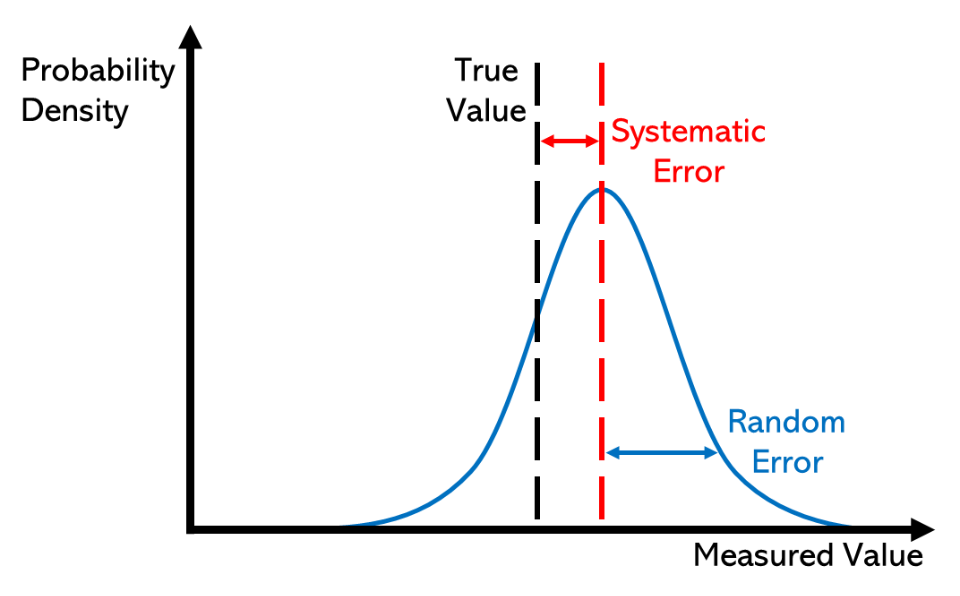OCR Specification focus:
‘Suggest realistic improvements to procedures and apparatus to refine experimental design and quality of data.’
Refining experimental design is essential for improving data quality in biological investigations by reducing errors, improving control and ensuring reliable evidence for valid conclusions.
Refining Experimental Design
Refining an experiment involves making purposeful adjustments to improve the quality, reliability and validity of data. Students must be able to propose realistic changes to methods, apparatus or controls that produce clearer and more trustworthy results that match the expected outcomes of the investigation.
Validity, Accuracy, Precision and Reliability
When refining an experiment, all improvements should target key quality measures. Validity refers to whether the investigation actually tests the intended hypothesis. Accuracy describes how close measurements are to the true value.

Target diagrams illustrating high and low accuracy and precision. These diagrams help link refinements to calibration, control of variables, and repeatability when improving data quality. Source.
Precision refers to the consistency of repeated measurements. Reliability concerns whether the experiment can be repeated to obtain similar results.
Control Variable: A variable that must be kept constant to ensure only the independent variable impacts the dependent variable.
Improvements should enhance at least one of these quality measures while avoiding unnecessary changes that introduce new sources of error.
Reducing Sources of Error
Errors can be systematic, consistently shifting measurements away from the true value, or random, causing unpredictable scatter in results.

Overlaid distributions showing the difference between systematic error, which shifts results away from the true value, and random error, which increases spread. This supports refined decisions about calibration and replication. Source.
Refinement aims to minimise both kinds through thoughtful planning.
Improving Control of Variables
Experiments lose validity when variables are poorly controlled. Refinements may involve:
Maintaining constant temperature, for example by using a thermostatically controlled water bath
Controlling light intensity using fixed distances or light filters
Standardising concentrations, volumes and timings with calibrated apparatus and digital timers
Using the same biological source or batch of reagent to reduce biological variation
Even small lapses in control can distort trends, so refining variable control strengthens the link between cause and effect.
Improving Apparatus and Measurement Resolution
Selecting better apparatus often improves accuracy and precision. Refinements include:
Choosing apparatus with a smaller measurement increment (for example, a syringe rather than a measuring cylinder for small volumes)
Using data loggers and sensors to reduce human reaction time errors
Calibrating equipment before use to avoid systematic bias
Using colorimeters, light probes or electronic balances to reduce subjective judgement
A refined design uses apparatus that matches the sensitivity required for the expected range of values.
Enhancing Reliability Through Repetition
Repeating measurements and identifying anomalous results increases reliability because patterns become clearer and random variation is reduced. Refinements include:
Taking a minimum of three repeats for each value of the independent variable
Calculating a mean, excluding anomalies where justified
Increasing the range of data to better reveal trends
Repeats support more confident conclusions and allow the use of statistical tools when appropriate.
Avoiding Bias
Bias reduces validity and can arise from personal judgement or inconsistent technique. Refinements may involve:
Using blind or standardised observation techniques for subjective measurements
Ensuring samples are randomly selected
Following a stepwise method to ensure identical treatment of all samples
Methodological Improvements
Refinements to the procedure itself often produce the greatest improvement in data quality.
Strengthening the Method
Methods should be unambiguous, repeatable and targeted to the hypothesis. Refinements can include:
Adding specific quantities, times and conditions to reduce ambiguity
Reordering steps to improve clarity and reduce sample degradation
Introducing appropriate control experiments to confirm that results arise from the independent variable and not another factor
A refined method ensures that any competent biologist could repeat the investigation and obtain similar data.
Minimising Human Error
Human error contributes to random inaccuracy. Useful refinements include:
Ensuring samples are mixed thoroughly before measurement
Using markers or rulers to aid accurate reading of scales
Allowing time for equilibration before recording results
Taking readings at eye level to avoid parallax error
Each change reduces variation and strengthens confidence in the data.
Ethical, Practical and Safety Considerations
Refined designs must remain realistic and safe. Improvements should avoid unnecessary risks and follow ethical guidance when using biological materials. Better experimental design should also consider whether suggestions are practical within school or field settings, balancing ideal improvements with realistic constraints.
Effective refinement strengthens the credibility of biological investigations by producing data that are trustworthy, reproducible and genuinely reflective of the biological question being tested.
FAQ
Pilot studies allow researchers to test whether the method works before collecting full data. They help reveal timing issues, equipment limitations, and variables that are difficult to control.
A pilot can also expose flaws in sample handling or measurement techniques, allowing adjustments that prevent systematic error and reduce wasted time.
Refinements based on pilot feedback lead to a clearer final method, improved control of variables, and better reliability.
A refinement is realistic when it could be carried out with equipment typically found in a school or field setting.
Suitable refinements should:
• Improve measurement quality
• Reduce error or bias
• Avoid introducing new variables
Refinements that require expensive or inaccessible equipment, or make the method overly complex, would not be considered realistic.
A poorly chosen range or interval can hide trends or make patterns look misleading.
Smaller intervals allow clearer identification of the point where the dependent variable changes most rapidly, while a wider or extended range can confirm whether a trend continues or plateaus.
Choosing an appropriate scale enhances validity by ensuring the investigation properly tests the hypothesis.
Biological samples often vary naturally. Refining sample selection reduces variation caused by genetic or environmental differences.
Useful approaches include:
• Using organisms or tissues from the same source or age group
• Random sampling to avoid selection bias
• Ensuring equal treatment of all samples
This ensures differences in results are due to the independent variable, not sample variability.
A control experiment should be refined when it fails to isolate the independent variable effectively.
Refinements could include:
• Matching all volumes, temperatures, or timings with the experimental set
• Removing or replacing a reagent to show its specific effect
• Using a negative or positive control where appropriate
A refined control strengthens conclusions by confirming that observed changes were caused by the intended factor.
Practice Questions
Question 1 (2 marks)
A student carries out an investigation but uses a measuring cylinder with 5 cm3 graduations to measure very small volumes. Suggest one refinement to improve the accuracy of the measurements and explain why it would be effective.
Question 1 (2 marks)
1 mark for a suitable refinement:
• Use a more precise measuring device, such as a syringe or a burette.
1 mark for explanation:
• Smaller graduations allow smaller volume changes to be measured more accurately, improving accuracy.
Question 2 (5 marks)
A student investigates the effect of pH on the activity of an enzyme. The student identifies the independent and dependent variables correctly but obtains data with large variation and unclear trends. Suggest and justify four realistic refinements to improve the design of this investigation so that more reliable and valid data can be obtained.
Question 2 (5 marks)
Award 1 mark for each well-justified refinement. Possible points:
• Use replicated measurements or repeats to calculate a mean and reduce the effect of random error (1 mark).
• Control temperature using a thermostatically controlled water bath to ensure only pH affects enzyme activity (1 mark).
• Use more precise apparatus, such as a colorimeter or gas syringe, to collect data quantitatively and reduce subjective judgement (1 mark).
• Maintain substrate concentration, enzyme concentration and sample volumes to improve validity and control variables (1 mark).
• Take more pH values to increase the range and detect clearer trends (1 mark).

